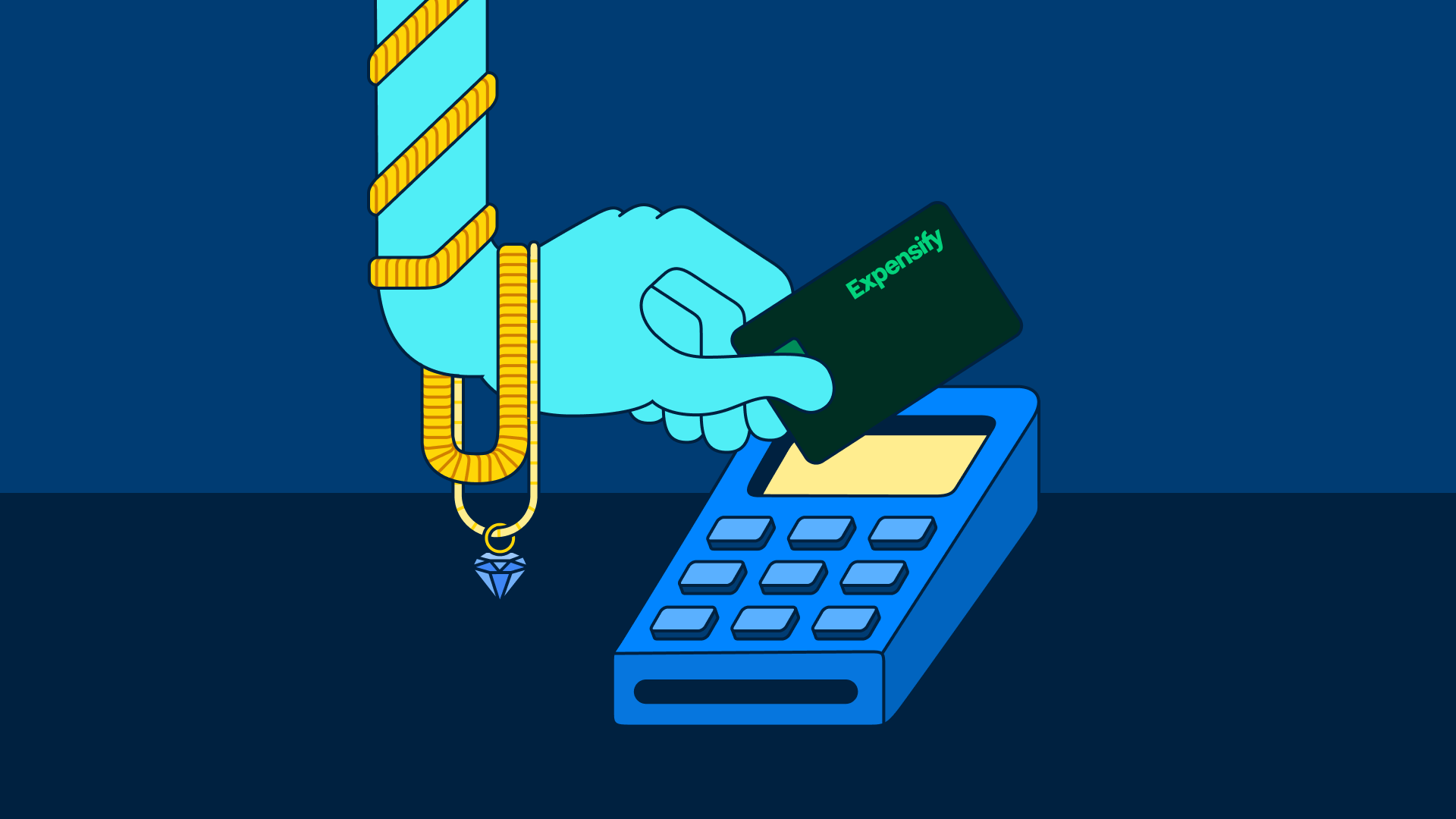The state of credit cards in 2025: 50 stats you need to know

Every swipe, tap, or click of a credit card tells a story about our economy, consumer behavior, and technological evolution. In 2025, these plastic (and increasingly digital) rectangles continue to dominate the payment landscape – with Americans holding over 500 million cards and global transaction volumes reaching unprecedented heights.
For businesses, especially those managing employee expenses, understanding these credit card statistics isn't just interesting – it's essential for strategic financial planning. Whether you're evaluating your corporate card program or looking to streamline expense management, these facts about credit cards provide valuable context for your decisions.
Let's explore the most eye-opening credit card usage statistics of 2025, from spending habits to fraud trends and the digital transformation reshaping how we pay.
The current state of credit card usage in 2025
The credit card industry continues to evolve rapidly, with significant changes in how both consumers and businesses utilize these powerful financial tools. Here are a few striking credit card ownership statistics:
Over 800 million credit cards are currently in circulation in the United States [1]
The average American holds 3.9 credit cards in their wallet (or digital wallet) [2]
Credit cards account for approximately 31% of all payment transactions in the United States [3]
Credit card payment volume increased by 8.2% year-over-year in 2022, continuing to outpace GDP growth [4]
This continued expansion demonstrates that despite the rise of alternative payment methods, credit cards remain firmly entrenched in our financial ecosystem.
Why consumers choose credit cards over other payment methods
The continued dominance of credit cards isn't accidental – it's driven by tangible benefits that consumers find difficult to resist. Here are some credit card payment statistics:
Tap-to-pay functionality has reduced transaction times by 63%, making checkout experiences significantly faster than cash [5]
77% of consumers cite fraud protection as a primary reason for credit card usage over debit cards [6]
Rewards programs return an average of 1.6 cents to general purpose cardholders [7]
41% of Gen Z consumers and 40% of Millennial consumers report that building credit history is a major factor in their decision to use credit cards regularly [8]
These advantages create powerful incentives that keep credit cards at the forefront of payment preferences, despite emerging alternatives.
Credit card spending habits
Examining how consumers and businesses use their credit cards reveals important patterns that reflect broader economic trends.
Less than half of adult cardholders carried a balance in the past 12 months [9]
Though 33% of restaurant purchases are made with credit cards, credit card holders are the biggest spenders at restaurants (nearly $30 billion annually) [10]
Over 80% of US consumers used credit cards or took on debt to pay for holiday purchases in 2024 [11]
Online transactions now make up 69% of all credit card purchases, with mobile devices accounting for 32% of those online transactions [12]
These spending patterns reflect the ongoing shift toward digital commerce and the integration of credit cards into everyday purchase decisions.
The impact of economic factors on credit card usage
Economic conditions significantly influence how consumers and businesses utilize credit. Recent economic developments have shaped usage patterns in measurable ways.
Persistent inflation has driven an 18% increase in credit card reliance for everyday expenses among middle-income households [13]
Total U.S. credit card debt exceeded $1.17 trillion in early 2025, reflecting growing financial pressure [14]
Average credit card interest rates climbed to 22.8%, affecting how consumers manage revolving balances [15]
Emergency expenses now account for 25% of unexpected credit card charges, with medical costs being the leading category [16]
These American credit card debt statistics highlight how credit cards often serve as financial safety nets during challenging economic conditions.
Credit card theft and fraud
As credit card usage grows, so do the sophisticated attempts to exploit these payment systems. Here are some credit card theft and fraud statistics and trends:
Credit card fraud losses will total $43 billion globally by 2026 [17]
Account takeover fraud has become the most common type of credit card fraud, representing 33% of all incidents [18]
California, Florida, and Texas remain the top states for fraud activity, accounting for 43% of all reported cases [19]
80% of consumers shopping online have been targeted or become victims of fraud during the holiday season [20]
Understanding these credit card fraud statistics helps both consumers and businesses implement more effective security measures.
Credit card skimming and identity theft
The evolution of credit card theft continues to present challenges for the industry and cardholders alike.
Online card skimming (e-skimming) grew over 350% from 2022 - 2023 [21]
EMV (Europay, Mastercard, Visa) chip technology can reduce up to 80% of skimming incidents at gas stations [22]
E-commerce skimming through compromised websites increased by 29% year-over-year [23]
The average cost of resolving identity theft stemming from credit card breaches is $680 per victim [24]
These credit card skimming statistics underscore the shifting landscape of credit card security threats from physical to digital environments.
Business credit card adoption
For companies managing expenses, business credit cards have become essential financial tools with distinct usage patterns.
83% of small businesses use at least one business credit card for operations [25]
Average business credit card spending reached $13,000 monthly per card in 2023 [26]
Companies using automated expense management systems report a reduction of 30-40% of time spent versus not using an automated system [27]
These business credit card statistics highlight how business credit cards have evolved beyond simple payment methods to become integrated financial management tools.
The digital transformation of credit cards
Technology continues to reshape how credit cards function and integrate with broader payment ecosystems.
Mobile wallets are expected to grow by 15%, with nearly 5 billion users by 2025 [28]
Contactless payments now make up 50% of global in-person payments [29]
Virtual card growth for businesses is expected to be at $500B in 2025 [30]
84% of global cardholders have used biometrics authentication methods as a means of payment approval [31]
This digital evolution reflects the industry's adaptation to changing consumer expectations and technological capabilities.
Credit card debt realities
Behind the convenience of credit cards lies the challenging reality of debt management for many Americans.
The average credit card debt increased to $6,730, a 3.5% increase, in 2024 [32]
Credit card delinquency rates rose to 3.6% in Q4 2024, reflecting financial strain [33]
22% of credit card users only make minimum payments on their balances [34]
These credit card facts reveal the average credit card debt in US households and potential downsides of credit card usage without proper financial management.
Demographic breakdown of credit card usage
Credit card utilization varies significantly across different population segments, revealing important patterns.
60% of Gen Zer’s have said they had a credit card in their early 20’s, compared to Millennials at 54.5% at the same age [35]
The average American has 3.9 active credit cards [36]
Credit cards account for 31% of all retail spending [37]
Understanding these demographic differences helps businesses tailor their payment strategies to different customer segments.
The future of credit cards and payment technology
Looking ahead, several emerging trends indicate where the credit card industry is heading.
Quantum resistant credit cards are becoming the near future [38]
AI-powered fraud detection systems are reducing false positives by 40-60% [39]
These forward-looking statistics point to a future where credit cards become more secure, personalized, and integrated with broader financial tools.
Best practices for businesses managing corporate cards
For companies looking to optimize their corporate card programs, industry data points to several effective approaches.
Companies with realtime spending visibility report 5.8% reduction in total spend [40]
Manual expense report processing costs an average of $35+ per report versus ~$25 with automated systems [41]
Implementing these best practices can transform corporate cards from potential administrative headaches into strategic financial tools.
FAQs about credit card statistics
-
The main pros of credit cards include building credit history, fraud protection, and rewards programs. The primary cons are high interest rates (averaging 22.8% in 2025), potential for debt accumulation, and annual fees on premium cards that can reach $700+.
-
The four major credit card networks are Visa (controlling approximately 53% of the market), Mastercard (26%), American Express (19%), and Discover (3%). These networks process transactions between merchants and card issuers. [42]
-
Businesses typically pay between 1.5% and 3.5% of each transaction in credit card processing fees, with the average rate in 2025 being 2.3%. These rates vary based on industry, transaction volume, and card type. [43]
-
Yes, most business credit cards report to business credit bureaus, helping establish a business credit profile. However, there are several caveats. Some credit agencies may only report negative instances, like late payments, etc. Be sure to ask for the fine print when you apply for a business credit card to make sure you understand what you’re getting into. [44]
-
The average small business debt when it comes to credit cards is approximately $700 as of early 2025. This debt is frequently used to manage cash flow gaps, fund growth initiatives, or cover emergency expenses. [45]
-
The 5/24 rule is Chase Bank's policy that typically denies credit card applications to people who have opened 5 or more personal credit cards (across all banks) in the past 24 months. Some credit card issuers have a similar rule, so be sure to check before you apply for any credit card and have recently opened one. [46]
-
The 15-3 rule is a credit card payment hack where cardholders make two payments per billing cycle: one 15 days before the statement closing date and another 3 days before. This approach helps reduce the balance that appears on your monthly statement. Since credit card companies typically report the statement balance to credit bureaus, this method can help keep your reported credit utilization ratio lower.
The first payment (at day 15) handles the bulk of the balance, while the second payment (at day 3) clears any new charges made after the first payment. While this strategy doesn't change how scoring models work, it can help you maintain lower utilization ratios, which is one factor considered in credit scoring. [47]
-
75% of American adults currently have at least one credit card, with ownership rates highest among Baby Boomers (83%) and lowest among Gen Z 18-24 (68%). [48]
-
The average credit card interest rate in early 2025 stands at 22.8%.
-
Credit card fraud has evolved significantly in recent years. From 2017 to 2019, it ranked as the most common type of identity theft before being surpassed by government benefits fraud during the pandemic. Despite dropping from the top position, credit card fraud has continued to increase substantially—with a 49% surge in reported cases in 2020 compared to 2019.
The trend hasn't reversed, as 2023 showed 53% more reported cases than pre-pandemic levels in 2019. This persistent growth indicates that while fraudsters temporarily shifted focus to pandemic relief programs, credit card fraud remains a significant and growing threat to consumers. [49]
-
The average credit limit on credit cards in the U.S. reached $29,855 by the end of Q3 2023, representing a 6.8% increase from the $27,955 average in Q3 2022. Credit limits vary significantly by age group, with older consumers typically having higher limits due to longer credit histories.
Credit newcomers, those rebuilding their credit, and individuals with lower incomes generally receive substantially lower credit limits. These variations reflect how issuers adjust credit limits based on perceived risk and creditworthiness. [50]
Corporate card management made easier with Expensify
Responsible corporate card use can be a powerful tool for building financial health, and Expensify is here to help you navigate the landscape with confidence. Whether you simply want to track receipts for personal tax returns or manage expenses for a growing team, Expensify can help you keep your money life organized.
And if you're wondering how to get a corporate card, look no further than the Expensify Visa® Commercial Card. Not only does it save you money on your Expensify bill, it's got cash back, spend controls and alerts, and plenty of advanced functionality that grows with you.
Ready to get started? Enter your information below and we'll take it from there.
Debt? I don't know it.
Learn how to manage your money better with Expensify.
Expensify values your privacy. We’ll never sell your personal information to others.

Resources
Credit and Debit Card Market Share by Network and Issuer, Motley Fool Money
What Is the Average Number of Credit Cards? Experian
2023 Findings from the Diary of Consumer Payment Choice, The Federal Reserve Financial Services
US Credit Card Issuer Performance, 1Q 2023, McKinsey & Company
How Long Do Contactless Payments Take to Process Nationwide?, GoTab
85% of Consumers Without Paycheck Pressures Choose Credit Cards for Their Security Features, PYMNTS
Credit Card Data, Statistics and Research, NerdWallet
Credit Card Statistics And Trends, Forbes
2025 Credit Card Debt Statistics, LendingTree
Credit Card Users Are the Biggest Spenders at Restaurants, PYMNTS
Why More Shoppers Will Rely On Credit Cards And BNPL This Holiday Season, Forbes
FEDERAL RESERVE PAYMENTS INSIGHT BRIEF: Banking my way — Gen Z and millennials are driving change in payments, The Federal Reserve
Credit Card Debt at an All Time High: the costs of consumerism, The Sunday Diplomat
‘It’s a constant weight’: Americans struggle with record credit card debt, The Guardian
Credit card interest rate margins at all-time high, Consumer Financial Protection Bureau
Bankrate’s 2025 Annual Emergency Savings Report, Bankrate
Credit Card Fraud Statistics (2025), Merchant Cost Consulting
These Are the Biggest Fraud Risks Banks Will Face in 2024, The Financial Brand
Identity Theft and Credit Card Fraud Statistics for 2025, Motley Fool Money
Holiday fraud trends and how to protect your business, Telesign
US Card Skimming Grew Nearly 5x in 2022, New FICO Data Shows, FICO
Gas Station Payment Security: Best Practices for a Safer Experience, National Retail Solutions
Incident Response for E-commerce Breaches: A Guide to Protecting Your Online Business, IntaForensics
Victims of Identity Theft, 2021, U.S. Department of Justice
Visa U.S. Small Business Pulse, November 2024, Visa
Survey: Small-business credit card satisfaction grows, ABA Banking Journal
Future of Finance, PwC
2024 Payment Methods Report: Overview, Insights, and Statistics, Clearly Payments
Mastercard: Contactless Payments Now 50% of Global in-Person Transactions, PYMNTS
The rise and staying power of virtual cards for B2B payments, Visa
Go Active: Biometric for Payment Cards, SPS In Groupe
Average Credit Card Debt Increases 3.5% to $6,730 in 2024, Experian
Household Debt Balances Continue Steady Increase; Delinquency Transition Rates Remain Elevated for Auto and Credit Cards, Federal Reserve Bank of New York
A record number of consumers are making minimum credit cards payments as delinquencies also rise, CNBC
Gen Z Has More Credit Cards—and Uses Them More—Than Other Generations, PaymentsJournal
Credit Card Facts & Statistics – Debt, Spending & More, Upgraded Points
Credit Cards: Retail Banks’ Roadmap to Untapped Value, A.T. Kearney
Mastercard’s Quantum Security Innovations: What the Financial Industry Needs to Know, 1950.ai
AI-driven fraud detection in banking: A systematic review of data science approaches to enhancing cybersecurity, ResearchGate
The 2024 Total Spend Management Benchmark Report, Coupa
The True Cost of Manual Expense Reports, Expense Wire
What are Credit Card Networks?, Clearly Payments
Credit Card Processing Fees: What Small Businesses Should Know in 2025, Nerd Wallet
The Differences Between Business Credit Cards and Personal Credit Cards, Dun & Bradstreet
Cash or credit: Small business use of credit cards for cash flow management, JPMorganChase
Chase 5/24 Rule Explained, Nerd Wallet
Does the 15/3 Credit Card Hack Work?, Experian
Survey: Nearly half of American credit cardholders still carry debt, many for at least a year, Bankrate
Identity Theft and Credit Card Fraud Statistics for 2025, Motley Fool Money
What’s the Average Credit Limit on a Credit Card?, Experian








